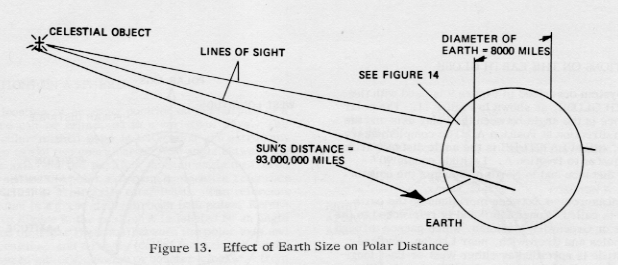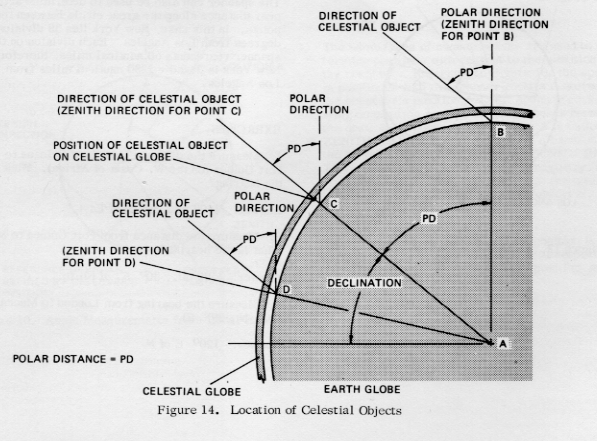
|
POSITIONS ON THE CELESTIAL GLOBE A system of coordinates similar to that described in Figures 11 and 12 is used to label directions in the sky. These directions are represented as positions on the CELESTIAL GLOBE of the Uniglobe. The effect of the size of the earth on measurement of angle is shown in Figure 13. The extremely large distances from the earth to a celestial object, compared to the radius of the earth, results in making the lines of sight effectively parallel. This means that the measurement of polar distance for a distant star will be essentially the same when measured from any point on the earth's surface. DECLINATION, the complement of polar distance, will also be the same. Figure 14 demonstrates how the positions of celestial objects are located |
on the celestial globe by extending an imaginary line from the center of the earth to the celestial object. The location of the celestial object is indicated at the point where the imaginary line intersects the surface of the celestial globe. The polar directions at all observation points are considered parallel, and the lines of sight to the celestial object are considered parallel, therefore the polar distance to the celestial object will be the same at any point on the earth's surface and at the earth's center. In the case of objects near to the earth, lines of sight directions are not parallel and the difference is significant, (called PARALLAX). In the case of distant stars and planets, the parallax is less than 1/60th of a degree. The parallax of the moon varies from zero to nearly one degree, and will be discussed later. The parallax of earth satellites is very large and significant. |
